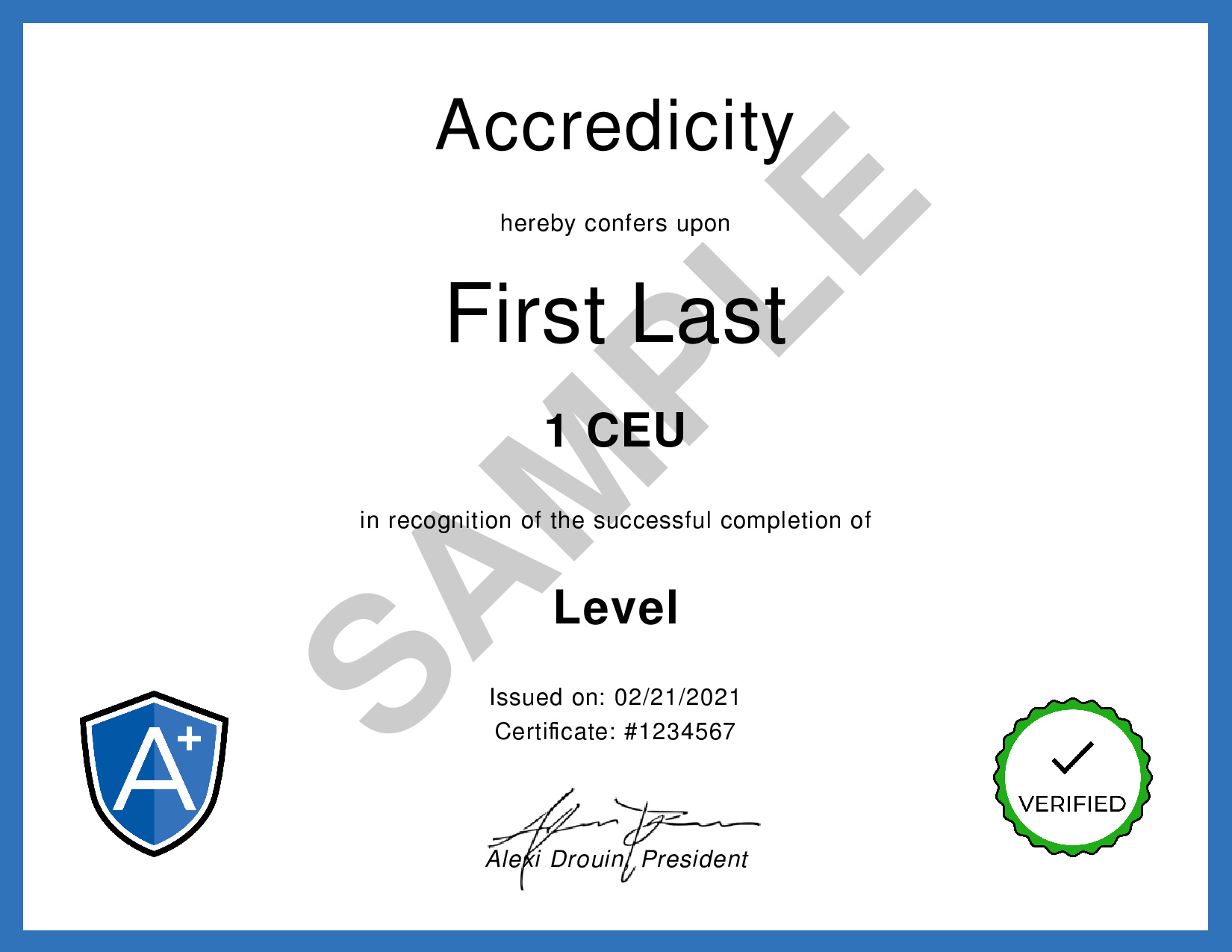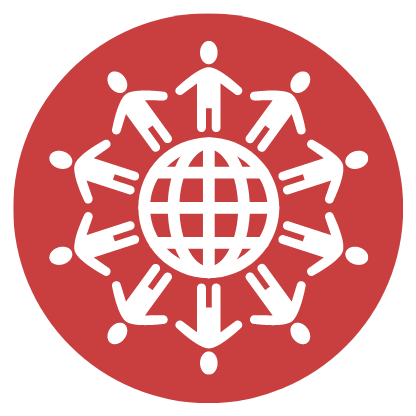SS15: How to Create a Fair Workplace | CrashCourse
Reference: CrashCourse. (2019, June 19). How to Create a Fair Workplace: Crash Course Business: Soft Skills 15 [Video]. YouTube.
We Make Your Education Count

Get the Credit You Deserve and Become the Most Attractive Job Candidate by Earning and Posting A+ Badges to Your Linkedin Profile.
Sign Up to Get Started at Accredicity
Learn the essential steps to create a fair workplace and foster a productive work environment.Creating a fair workplace is paramount for a successful business. Evelyn from the Internets tackles this important topic in Crash Course Business: Soft Skills 15. Fairness is a key factor for trustworthiness, productivity, and employee satisfaction. Outcome fairness, procedural fairness, and interactional fairness are three important elements of a fair workplace. Outcome fairness involves providing rewards that match people's perceived need, equality, and merit. Procedural fairness involves consistent rules and allowing people to voice their opinions. Interactional fairness is treating people with respect and honesty. If handled correctly, fairness can lead to more motivated employees, fewer lawsuits, and more productivity. Learning Outline1. Organizational justice is the idea that people at a company feel like they are being treated fairly. Instructional ContentCreating a workplace that is fair and just is a key component to any successful business. A workplace that is fair and just will lead to higher productivity, less turnover, and a more positive environment. But fairness is a complex concept that is more than just distributing rewards equally or making decisions without bias. It requires understanding the three different types of fairness: outcome, procedural, and interactional. Outcome fairness is the perception that a person is given what they deserve. This can be based on need, equality, or merit. Need is the most difficult to judge, as it can be subjective. Equality is a better way to treat everyone fairly, but doesn't always make sense for a business. Merit is based on an individual's contribution, though it is difficult to measure and define. To make sure you are making the best decision possible, it is important to recognize your own biases and consider what fits the culture of the organization. Procedural fairness is the perception that the decision-making process is fair and unbiased. This relies on five features: consistency, voice, accuracy of information, bias suppression, and correctability. It is important to apply the same rules to everyone and ensure that everyone has a voice. Additionally, accuracy of information is extremely important, and bias suppression should be attempted as much as possible. Finally, interactional fairness is the treating of people with respect and dignity. This requires understanding how people want to be treated, not just how you want to be treated. Being honest and vulnerable can be more effective than trying to hide issues. Creating a fair workplace requires understanding the complexities of fairness, and making sure that rewards, decisions, and interactions are all fair and just. By following these principles, you can create a workplace where everyone is happier and more productive. Social
|

Creating a fair workplace is like having a judge give a sheep a choice between two pens. The pen with grass and clover is like being rewarded with what you deserve and the one with just dirt is like being treated unfairly. To make sure everyone is treated fairly and happy, managers should try to be fair and watch out for biases that make them act unfairly. This involves rewarding people according to need, equality, and merit, making sure the decision-making process is fair and unbiased, and treating everyone with respect and dignity. This way, people will be more productive and happier. Quotes1. "We have to create a workplace environment where everyone feels respected and included, regardless of differences in background, identity, and opinion." - Evelyn 2. "It's essential to create a culture of fairness and respect for all, to ensure everyone is given the same opportunities to succeed." - Evelyn 3. "When we create an open and fair workplace, everyone can thrive and be their best." - Evelyn Competencies1. Integrity and Trust Learning Outcomes1. Understand: Identify the characteristics of a fair workplace and identify the benefits of fostering a workplace with fair practices. Sample Answers1. This video taught me that creating a fair workplace means creating an environment where everyone is treated equally and respectfully. It also means providing everyone with equal opportunities to learn and grow, regardless of their gender, race, or religion. Finally, it requires creating policies and procedures to ensure that everyone is held accountable and that there are consequences for inappropriate behavior. 2. Additionally, I learned that creating a fair workplace starts with the leadership. Leaders should create an environment of collaboration, communication, and respect. They should also be transparent about their expectations and policies to ensure fairness for all. 3. Finally, I learned that creating a fair workplace is a continuous process. Leaders should be open to feedback and be willing to make changes when necessary. They should also be available to answer questions, address concerns, and provide support. Evelyn From the InternetsEvelyn From the Internets is an employment lawyer who has worked with clients in both the public and private sectors. She has expertise in labor law and has a deep understanding of how to create a fair workplace. Evelyn is an adjunct professor at the University of California, Davis School of Law, where she teaches courses on labor law, employment discrimination, and employment law. She also serves as an advisor to the American Bar Association's Commission on Labor and Employment Law. Evelyn From the Internets is associated with the University of California, Davis School of Law. Learning DesignIntegrity and trust, company culture, and diversity and inclusion are important to learn for this course because they are the foundations of any successful social environment. These competencies are essential for understanding how to navigate the complexities of social interactions, work with colleagues, and build successful relationships. In order to build these competencies, students can use a variety of frameworks and pedagogies. The first of these is the Social Constructionism framework, which emphasizes the importance of understanding the social context of any given situation and the impact of language, culture, and identity on interactions. This framework can help students understand the nuanced social dynamics of different groups and cultures and how to navigate these relationships. AssessmentQ: Which of the following is a way to ensure that employees feel like they are part of a team? A. Ensure that everyone is held to the same standards Answer: C. Encourage collaboration and communication Questions1. What is a fair workplace? KeywordsFair Workplace, Soft Skills, Workplace Culture, Employee Engagement, Employee Retention, Employee Support Facts1. Creating a fair workplace includes developing a code of conduct and enforcing it in an equitable manner. Trends1. Create and implement a team-building program centered around fostering a sense of fairness and respect in the workplace. SourceThis learning instructional guidance was formulated using the GPT-3 language model created by OpenAI. ShareCreate a #fairworkplace with these tips from @CrashCourseBusiness: Respect each other, value diversity, foster teamwork, and set clear expectations. 🤝🌟 #SoftSkills #DiversityMatters #TeamworkMakesTheDreamWork @Accredicity |








 67 Creds - Social
67 Creds - Social



